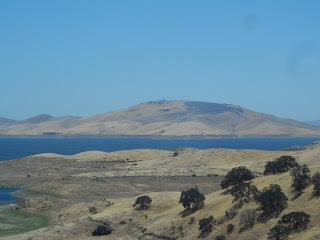 In 1993 I visited California for the first time when I spent four or five days at the annual National Conference of State Legislatures (NCSL) in San Diego. I loved the beauty of the city but was frightened by the apparent fragility of the infrastructure and what were already scary problems, including great poverty and homelessness, middle school age children with a sketchy command of English, people on the street with visible health problems and poor teeth. Drugs were readily available on every street corner, and I was warned that my habit of early morning inline skating on the pier was dangerous.
In 1993 I visited California for the first time when I spent four or five days at the annual National Conference of State Legislatures (NCSL) in San Diego. I loved the beauty of the city but was frightened by the apparent fragility of the infrastructure and what were already scary problems, including great poverty and homelessness, middle school age children with a sketchy command of English, people on the street with visible health problems and poor teeth. Drugs were readily available on every street corner, and I was warned that my habit of early morning inline skating on the pier was dangerous.I never even thought about the dependence on a limited number of water resources. That realization came a few years later, when we crossed the Pacheco Pass on our way from San Francisco to Fresno. Bob insisted on visiting the San Luis Reservoir, a stop I opposed but have remembered all these years. We learned that the reservoir stores water for all of California, delivered using a system of aqueducts all over the state.
We were a little shocked to see the banks of the reservoir when we caught our first glimpse of the reservoir on Thursday, the layers clearly marking diminishing water levels over four years of drought. This is a recreation area too, but we saw no boats in the shallow water as we passed by on this sunny afternoon.
 Some farms weren't being worked at all, and the air was full of dust from dry, unplanted fields. A few fields were irrigated, and strips of green broke the monotonous "Great Depression" look of the landscape. Occasional signs protesting government water policies stood by the wayside. One message hit the underlying economic impact on employment: "NO WATER; NO JOBS".
Some farms weren't being worked at all, and the air was full of dust from dry, unplanted fields. A few fields were irrigated, and strips of green broke the monotonous "Great Depression" look of the landscape. Occasional signs protesting government water policies stood by the wayside. One message hit the underlying economic impact on employment: "NO WATER; NO JOBS".Efforts to conserve water seem a little half-hearted and perhaps ineffective. Hotel admonitions are no different from what we see in Minnesota, reminding guests that water is a precious resource, but failing to convey any sense of urgency. In Fresno, summer outdoor irrigation is limited to two days a way week with reduced watering times, but it seems that more radical measures may be required.
This New York Times item speculates on the future of California.
No comments:
Post a Comment